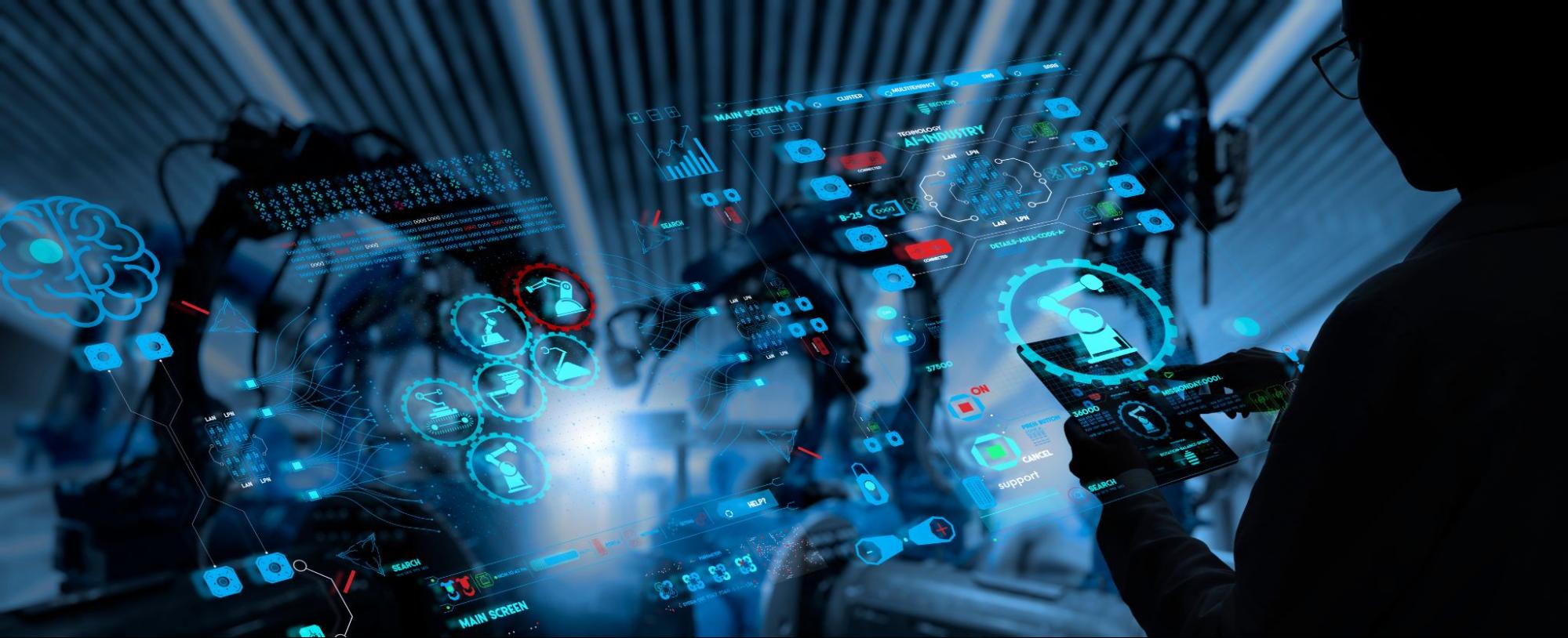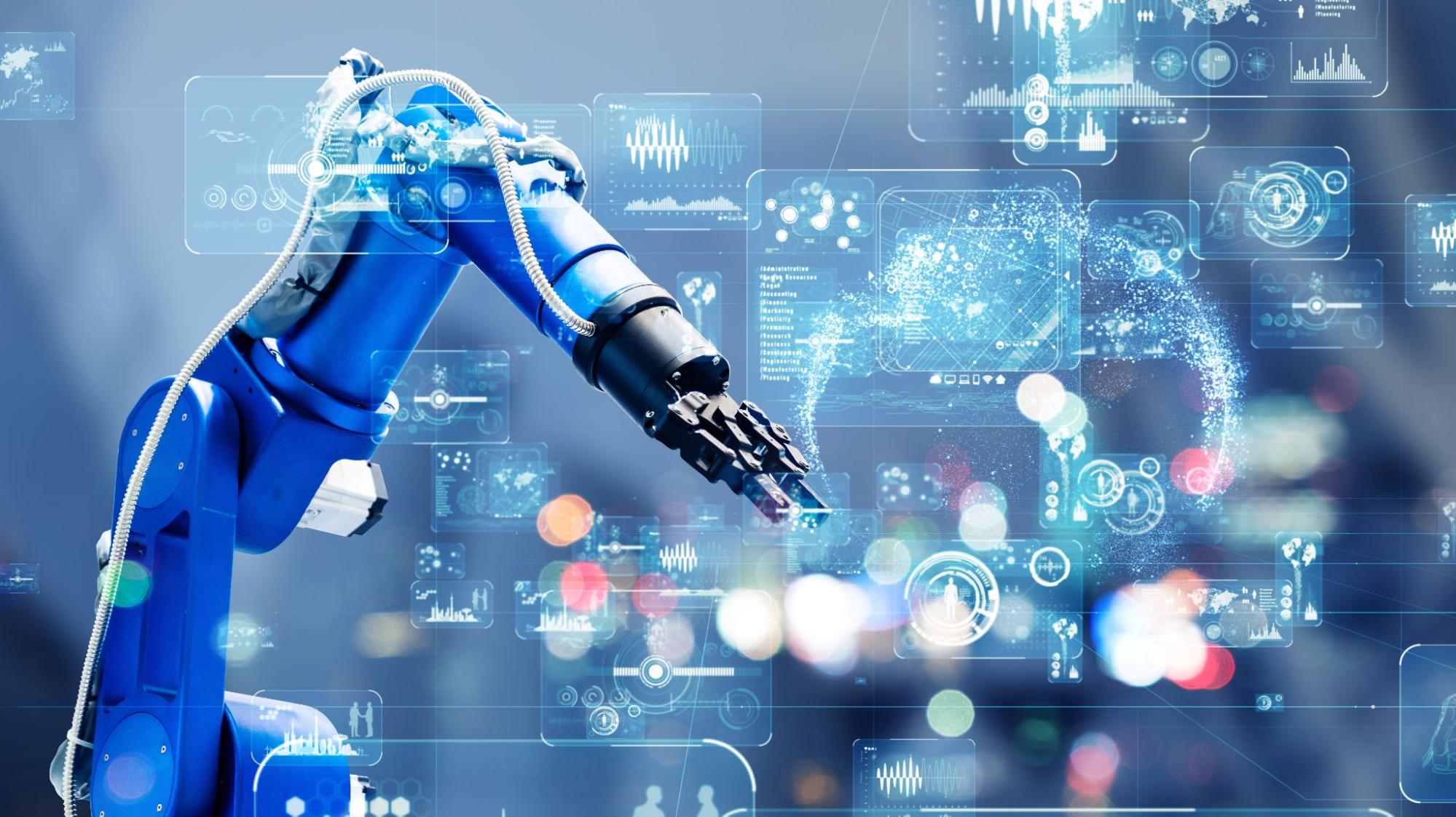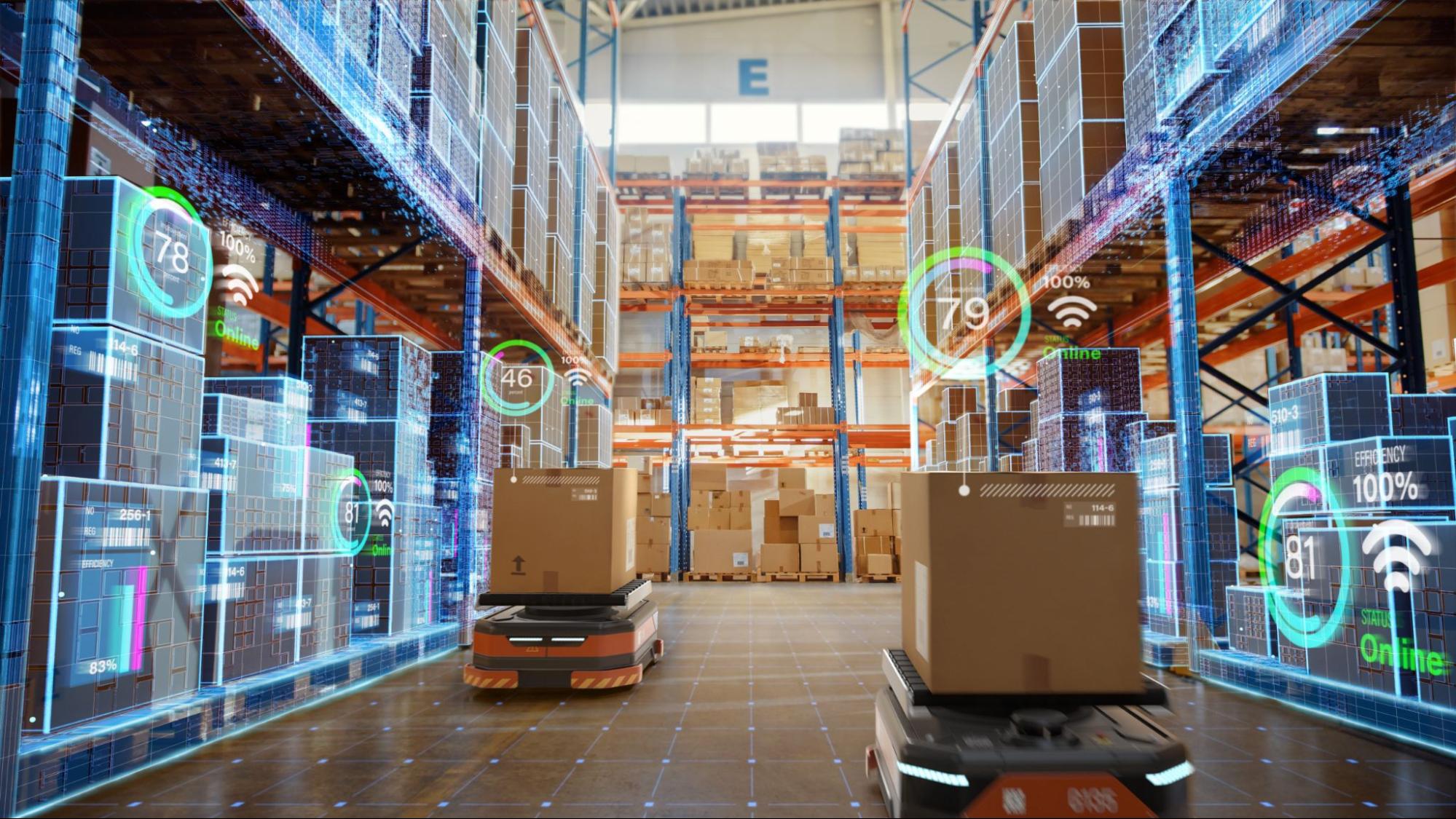Time to read: 6 min
In manufacturing, artificial intelligence is a catalyst tool that enables workers to accomplish higher-value tasks with greater accuracy, fewer errors, and fewer accidents. Instead of a dystopian nightmare, AI and digital manufacturing can be a huge advantage to a factory’s workforce.
Even though artificial intelligence sometimes gets a bad rap for being overhyped, it is no longer a futuristic concept. AI has been a core technology in mechanical engineering, design, and manufacturing for some time now.
AI works best when it has access to large amounts of data to find patterns and insights. With digital manufacturing increasing the sources of data throughout a factory floor, AI is primed to support workers by finding insights to improve production automatically.
With AI, machines break less often, higher-quality goods are produced, and people are spared from many mundane and tedious tasks, freeing them to do higher-value work. Embracing AI on the factory floor allows workers to stay a step ahead of the competition.

What Does AI Actually Mean?
Artificial intelligence has become a buzzword, but what does the term really mean? By definition, AI tries to replicate human decision-making and intelligence, although it is not yet indistinguishable from human intelligence. In practice, artificial intelligence looks for patterns and signals in large datasets to deliver insights that can be hard to discover otherwise.
Computers are exceptional at processing large amounts of data, which can make them better at spotting these insights than humans. While artificial intelligence covers a wide array of technologies, machine learning and neural networks are two popular applications of AI in manufacturing.

Machine Learning (ML)
On the road to “true” artificial intelligence—a hypothetical AI with human-level cognitive ability—machine learning is a significant first stop. Machine learning recognizes patterns in data and then applies those learnings over time to make better decisions. With machine learning, an AI algorithm can be trained on how to do a specific task, like identifying pictures of cats or detecting vibrational frequencies that indicate that a bearing is failing. With machine learning, an algorithm processes a large amount of labeled data, learns from it, and can then make better predictions on new data.
Deep Neural Networks
Machine learning builds artificial intelligence in a way that works specifically for computers. Computers typically work in a very linear way. Data is fed in from one direction, processed, and comes out at the end. The human brain, however, differs from computers in that it has a network of interconnected synapses. These connections allow many parts of the brain to process and analyze data simultaneously before arriving at an answer.
Based on the work of neuroscientists, computer programmers have attempted to replicate these connections through neural networks. Neural networks function by breaking complex tasks down into parts that can “learn” new behavior through interaction. These types of models tend to be more flexible and responsive, but can be harder to design.
How AI Makes Digital Manufacturing Better
AI, machine learning, neural networks—what does any of that have to do with manufacturing? AI enhances digital manufacturing by processing vast amounts of data generated before, during, and after production to inform better decision-making and increase efficiency. In short, artificial intelligence makes factories better.
Here are three key areas where AI enables digital manufacturing:
- Predictive maintenance
- Higher-quality parts
- Increased efficiency

Predictive Maintenance
Unexpected downtime can wreak havoc in a manufacturing environment. Even with good maintenance programs, machines can still fail at unpredictable times, causing missed ship dates and extra labor costs to get things running again. With artificial intelligence, data sources such as motor currents, vibrational frequencies and amplitudes, or even sounds, can be used to monitor equipment as it operates and to predict failures before they occur.
Just like the well-trained mechanic who has worked on a piece of machinery for many years, AI learns from datasets to find trends. An example of this is a slight increase in a motor’s current over time, indicating corrosion accumulation on the electrical contacts. Or the appearance of a specific vibrational frequency that shows up and grows in amplitude over time, which suggests that a bearing needs to be regreased. In either case, purchasing knows in advance, has time to get parts in stock, and maintenance can schedule repairs at an advantageous time.
Maintenance has evolved from reactive to preventative to predictive. Reactive maintenance occurs after a machine has broken. Preventive maintenance is performed on a fixed schedule to keep systems operating correctly—like changing air filters every three months. Predictive maintenance, enabled by AI, fixes things strategically when needed so that it never breaks at all.
Higher-Quality Parts: Quality Control and Automated Inspections
Quality control is critical in every manufacturing environment. As pressures to scale and accelerate production increase, maintaining quality can be a challenge. AI is uniquely positioned to help in this regard because of all the data present throughout the manufacturing cycle.
Starting in the quotation phase of manufacturing, artificial intelligence can analyze a native digital file of a part or assembly to be manufactured and perform an automated DFM analysis. Based on these results, recommendations can be quickly made to tweak the design so that manufacturing is more straightforward.
With a digital manufacturing environment, AI is enabled to assist on the shop floor, too. Whether analyzing production routes to manage load and increase efficiency or modifying batch sizes to meet lead times, AI can process the data from many variables on a shop floor. With computer vision systems, artificial intelligence can provide critical quality control functions to ensure product quality remains high and bad parts are rejected quickly. Trends in part quality can also be identified, and AI can make process change recommendations to keep quality high.
In a world of increasing lead times and supply chain disruptions, AI is the partner we’ve been waiting for. It takes large teams to wrestle with the amount of data from suppliers and vendors that change daily—and the impacts of those changes often reverberate through the entire system. With AI, these impacts are more easily identified, so plans can be formulated to circumvent issues as they arise.

Increased Efficiency: Automation and Workflow Intelligence
AI is not replacing workers but instead helps them produce greater results. Artificial intelligence helps workers make better decisions with clearer information—and better decision-making means getting more done with less effort than they could before.
Workers no longer have to make decisions based on a hunch. Instead of asking purchasing to keep spare parts on hand, inventory can be reduced and ordered based on AI predictions about when a given part will need to be replaced. That part can then be changed out at a scheduled, regular time without the disruptions that accompany an unexpected breakdown.
In addition to better decision-making from clear insights, AI frees workers to focus on higher-value work. Many current jobs that require mundane or highly repetitive tasks can offload those tasks to AI. Humans excel at creative problem solving, whereas computers are better at doing those repetitive tasks. When leveraged properly, AI is a catalyst to enable workers and manufacturing environments to achieve greater results with less effort. Letting computers do what they do best paves the way for humans to succeed.
The Future of AI in Digital Manufacturing
So, now you understand the benefits of artificial intelligence and digital manufacturing. AI enables factory workers to accomplish more by delivering greater insights into manufacturing data. Our robot overlords aren’t yet coming to take our jobs—but the robots are tools that can make manufacturing much more efficient.
Simplified Sourcing with Fictiv’s AI-Powered Platform
When it comes to custom part manufacturing, Fictiv has you covered. We simplify part sourcing with AI-powered, intelligent, streamlined, automated workflows—in short, Fictiv is your operating system for custom manufacturing that makes part procurement faster, easier, and more efficient.
Create an account and upload your part to see what our instant quote process, expert guidance, and intelligent platform can do for you.










